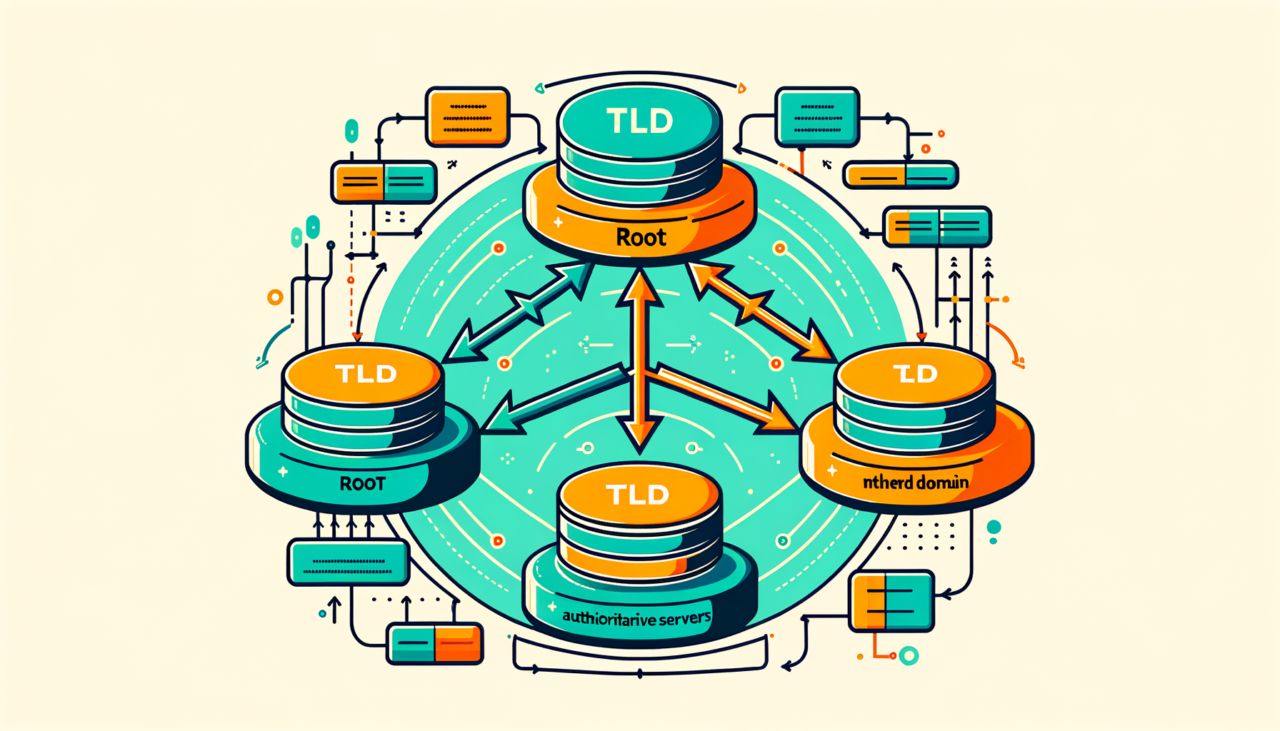The Domain Name System (DNS) is an essential component of the internet, acting as the phonebook of the web by translating human-friendly domain names into IP addresses that computers use to identify each other on the network. Understanding the DNS hierarchy is crucial for anyone involved in web development, network administration, or IT security. This article will delve into the three primary layers of the DNS hierarchy: Root Servers, Top-Level Domain (TLD) Servers, and Authoritative Servers.
What is DNS?
Before diving into the hierarchy, let’s briefly define DNS. DNS is a distributed naming system that allows users to access websites using domain names instead of IP addresses. It works behind the scenes, making it easier for users to navigate the internet without memorizing complex numerical IP addresses.
The DNS Hierarchy
The DNS hierarchy is structured in a top-down manner, comprising several layers that work together to resolve domain names into IP addresses. Here’s a breakdown of the main components:
- Root Servers
- Top-Level Domain (TLD) Servers
- Authoritative Servers
Root Servers
Root servers are at the top of the DNS hierarchy. There are 13 root servers worldwide, identified by the letters A through M, and managed by various organizations. Despite there being only 13 root server addresses, each represents a cluster of servers distributed globally to enhance performance and reliability. Their primary function is to direct queries to the appropriate TLD servers.
Root Server Operations:
- Receive Queries: Root servers receive queries for a domain’s IP address when the IP is not cached locally.
- Direct Traffic: They do not provide the IP address themselves but direct the query to the relevant TLD server.
Here’s a simple diagram illustrating the root server’s role:
+------------------+
| User's Device |
+------------------+
|
v
+------------------+
| Root Server |
+------------------+
|
v
+------------------+
| TLD Server |
+------------------+
Top-Level Domain (TLD) Servers
The second layer consists of TLD servers. These servers handle queries related to specific top-level domains such as .com, .org, .net, and country-specific TLDs like .uk or .jp. Each TLD has its own set of servers that manage the DNS entries for domains within that TLD.
TLD Server Operations:
- Handle Specific TLDs: Each TLD server is responsible for a particular domain extension.
- Direct to Authoritative Servers: Upon receiving a query from a root server, the TLD server directs it to the appropriate authoritative server.
Example of TLDs:
| TLD Type | Examples |
|---|---|
| Generic | .com, .org, .net |
| Country | .uk, .jp, .de |
| Sponsored | .edu, .gov, .mil |
Authoritative Servers
The final layer in the DNS hierarchy is the authoritative servers. These servers contain the actual DNS records for domains, including A records, MX records, and CNAME records. When a TLD server directs a query to an authoritative server, it provides the requested IP address back to the querying device.
Authoritative Server Operations:
- Contain DNS Records: They store and manage the DNS records for domains.
- Provide Final Resolution: Upon receiving a query, they provide the precise IP address or other DNS information.
Example DNS Query Process
To illustrate how these components work together, consider a user trying to visit www.example.com:
- User query: The user’s device sends a DNS query to a local DNS resolver.
- Root server query: If the resolver doesn’t have the IP cached, it queries a root server.
- TLD server query: The root server directs the query to the
.comTLD server. - Authoritative server query: The TLD server directs the query to the authoritative server for
example.com. - Response: The authoritative server returns the IP address to the resolver, which then forwards it to the user’s device.
DNS Caching
An important aspect of DNS is caching. Each layer of the DNS hierarchy can cache responses to improve efficiency and reduce the load on DNS servers. This means that once a query is resolved, its response is stored for a period defined by the Time to Live (TTL) value, allowing future queries to receive quicker responses without traversing the entire hierarchy again.
Conclusion
Understanding the DNS hierarchy—comprising root servers, TLD servers, and authoritative servers—provides insight into the intricate process that allows us to navigate the internet seamlessly. Each layer has a specific role, ensuring that domain names are accurately and efficiently resolved into IP addresses. Whether you’re a network administrator, web developer, or simply an internet user, a deeper understanding of DNS can enhance your appreciation of the complexities behind everyday web browsing.
For more in-depth information on DNS and how to optimize DNS performance, stay tuned to our blog or reach out to our DNS experts.

Comments (0)
There are no comments here yet, you can be the first!